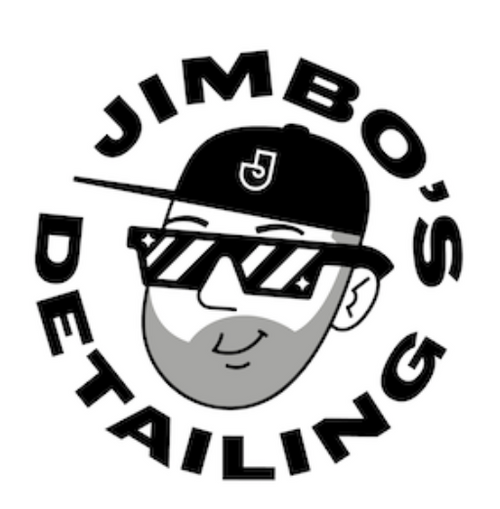How to Remove Overspray Safely
Accidentally got overspray on your paint, glass, or trim? Don’t panic — you can remove it safely without damaging your finish. In this guide, we’ll break down how to identify, remove, and prevent overspray using the right tools and products like Pure Magic Cleaner and Picture Perfect Polish.
Estimated Reading Time: ~10 minutes
What Is Overspray?
Overspray happens when tiny paint or clear coat particles drift through the air and settle on unintended surfaces. Common sources include nearby painting, construction work, or using aerosol sprays in windy conditions. These particles stick to your car’s paint, glass, or trim — leaving it rough to the touch and dull in appearance.
How to Identify Overspray
- → Paint feels rough even after washing.
- → You can see fine speckles or a matte texture on panels.
- → Water doesn’t bead evenly across affected areas.
- → Clay bar or mitt “grabs” instead of gliding smoothly.
If you notice these signs, it’s time for a safe decontamination process to avoid permanent damage.
Common Causes of Overspray
- Nearby painting or refinishing: Especially in parking lots or industrial areas.
- Improper spray technique: Wind carrying particles during DIY projects.
- Roadwork and construction: Sealants or tar-like materials from fresh asphalt jobs.
- Aerosol detail products: Spraying too close to trim or glass without masking.
Safe Overspray Removal Methods (Compared)
| Method | Best For | Risk Level | Effectiveness |
|---|---|---|---|
| Clay Mitt or Bar | Light to moderate overspray | Low | High |
| Tar or Solvent Remover | Heavy paint or industrial overspray | Medium (use caution) | Very High |
| Polishing | Refining finish post removal | Low | High gloss restoration |
What You’ll Need
- Pure Magic Cleaner – for dissolving tough paint or tar-based overspray.
- Picture Perfect Polish – for final refinement and shine.
- The Super Soaper – for a safe pre-wash and lubrication.
- Everyday Microfiber Towels – to wipe and buff surfaces clean.
- Clay mitt or clay bar
- Applicator pads and gloves
Step-by-Step: How to Remove Overspray Safely
Step 1: Wash the Surface
Start with a thorough wash using The Super Soaper to remove surface dirt and grime. Always work in the shade and ensure the surface is cool to the touch.
Step 2: Test Area First
Before treating the entire car, test your chosen method on a small inconspicuous area. This ensures compatibility and helps you gauge the level of contamination.
Step 3: Clay the Surface
Use a clay mitt or clay bar with The Super Soaper diluted as a lubricant. Work in straight lines with light pressure until the surface feels smooth. Wipe dry with a clean microfiber towel.
Step 4: Use a Solvent if Needed
For heavy overspray, apply Pure Magic Cleaner to a microfiber towel and gently wipe the affected area. Let it dwell briefly (10–15 seconds), then wipe clean. Do not allow solvent to dry on the surface.
Step 5: Polish for Perfection
Finish by polishing with Picture Perfect Polish to remove any light marring and restore full gloss. Use an applicator pad or dual-action polisher for best results.
Step 6: Protect the Surface
After removal, seal the paint with Tough As Shell for long-term protection and easy future maintenance.
Power Through Stubborn Overspray
Pure Magic Cleaner breaks down paint, tar, and industrial fallout safely — restoring smoothness without harming clear coat or rubber trim.
Shop Pure Magic Cleaner Buy on AmazonTips for Safe Overspray Removal
- → Always work in small sections and keep the surface lubricated.
- → Avoid dry wiping — this can grind contaminants into the clear coat.
- → Never use razor blades or harsh chemicals on paint.
- → Rinse clay mitts frequently to avoid reintroducing particles.
- → After removal, always follow up with a protective sealant or coating.
Refine and Restore Gloss
Picture Perfect Polish removes light marring and brings your paint back to life after overspray removal — leaving a flawless finish ready for protection.
Buy on Jimbo’s Detailing Buy on AmazonPreventing Overspray in the Future
- → Avoid parking near body shops or construction zones.
- → Cover your car when nearby painting is happening.
- → Always spray detailers and dressings away from the wind.
- → Maintain a protective layer like Tough As Shell to minimize future bonding.
Related Reading
- How to Use a Detailing Clay Mitt vs Traditional Clay Bar
- How to Detail After a Road Trip (Mud, Bugs, Salt)
- How to Apply Paint Sealant Correctly
- How to Prevent & Remove Oxidation From Clear Coat
- How to Use Back-to-Back Detailing (Wash → Seal → Quick Detail)
FAQs
Can I remove overspray without polishing?
Yes — start with clay and Pure Magic Cleaner. Polishing is optional but recommended to refine gloss after removal.
Is overspray removal safe for clear coat?
Absolutely. When done with the right lubrication and gentle technique, it won’t harm your clear coat.
Can overspray damage glass?
Yes, but it’s removable with clay or mild solvent. Use glass-safe towels and wipe gently.
Will clay remove all overspray?
Clay removes most light to moderate overspray, but heavy paint mist may require Pure Magic Cleaner or light polishing.
Do I need to wax or seal after removing overspray?
Yes, always apply protection afterward. Use Tough As Shell for long-term results and easy maintenance.



